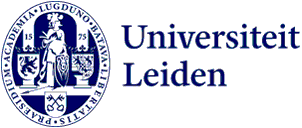Admission Requirements
None.
Description
In theory, the translator’s job is not a very difficult one: rendering a text in one language into a text in another. In the process, make sure that the translated text (the target text) is a faithful representation of the original text (the source text). And if possible, the target text should make for as natural reading as the source text. If translation were as easy as in this in practice, there would probably be no need for translators: their work could then quite easily be taken over by a computer. However, this is not possible, at least not according to the state of the art. Computers are able to handle single words and short, simple sentences and maybe even longer sentences, if these are stored as a formula of a kind. However, most texts that translators get to work on are too sophisticated for a computer. A possible explanation for this is that human beings are better suited to the many demands placed on a translator, i.e. an familiarity with a specialist language, but more than that: the ability to recognize and solve translation problems.
This ability can be trained: it requires understanding of the fact that different languages make use of different lexical and grammatical constructions to describe the world. It also requires skill in transforming these constructions. This will be the focus of this introductory translation course.
Course Objectives
At the end of the course, you should be sufficiently confident to translate a Dutch text that does not contain specialist information or terminology into grammatically and stylistically correct English. Having acquired a basic active vocabulary you will be able to translate a simple text without the help of a dictionary or other type of reference material, and you will be able to translate more complex texts with the aid of dictionaries and thesauri.
Timetable
The timetable will be available from July 1 onwards on the Department website. Timetable
Mode of Instruction
One two-hour seminar per week.
Assessment
Average mark of three translations, handed in during the course (40%)
Translation test (one translation without and one with reference tools) (60%)
Blackboard
This course is supported by Blackboard.
Reading list
Lemmens, M. & Parr, T. (2002). Handboek voor de vertaler Nederlands-Engels (opdrachten)¬. Amsterdam: Intertaal
Lemmens, M. & Parr, T. (2002). ¬_Handboek voor de vertaler Nederlands-Engels (praktische tips)_. Amsterdam: Intertaal
Registration
Students can register through uSis.
Contact information
English Department, P.N. van Eyckhof 4, room 103c. Phone: 071 527 2144, or mail: english@hum.leidenuniv.nl
Remarks
Students are expected to still be in possession of the reference books prescribed for Language Acquisition 1. Furthermore, students are advised to buy the translation dictionaries by Van Dale.
